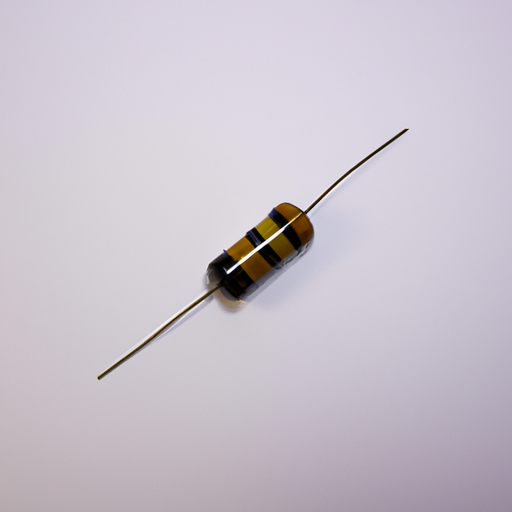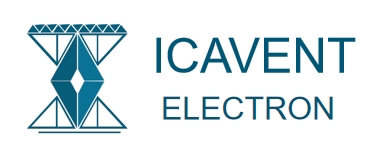Understanding Capacitors: What They Are and Their Costs

I. Introduction
In the world of electronics, capacitors play a crucial role in the functionality of various devices. But what exactly is a capacitor? At its core, a capacitor is a passive electronic component that stores electrical energy in an electric field. This simple yet powerful device is essential in many applications, from filtering signals to providing energy storage in power supplies. In this article, we will delve into the intricacies of capacitors, exploring their types, functions, and the factors that influence their costs.
II. What is a Capacitor?
A. Basic Definition and Function
A capacitor is an electronic component that can store and release electrical energy. It consists of two conductive plates separated by an insulating material known as a dielectric. When a voltage is applied across the plates, an electric field is created, allowing the capacitor to store energy. This stored energy can be released when needed, making capacitors vital in various electronic circuits.
B. Components of a Capacitor
1. **Plates**: The conductive plates are typically made of metal and are responsible for storing electrical charge. The surface area of these plates and the distance between them significantly affect the capacitor's performance.
2. **Dielectric Material**: The dielectric is the insulating material that separates the plates. It can be made from various materials, including ceramic, plastic, or electrolytic substances. The type of dielectric used influences the capacitor's characteristics, such as its capacitance and voltage rating.
C. Types of Capacitors
Capacitors come in various types, each designed for specific applications:
1. **Ceramic Capacitors**: These are widely used due to their small size, low cost, and stability. They are ideal for high-frequency applications and are often found in decoupling and filtering circuits.
2. **Electrolytic Capacitors**: Known for their high capacitance values, electrolytic capacitors are polarized and typically used in power supply circuits. They are larger and more expensive than ceramic capacitors.
3. **Tantalum Capacitors**: These capacitors offer high capacitance in a small package and are known for their reliability. They are often used in applications where space is limited.
4. **Film Capacitors**: Made from thin plastic films, these capacitors are known for their stability and low loss. They are commonly used in audio and high-frequency applications.
5. **Supercapacitors**: Also known as ultracapacitors, these devices can store a large amount of energy and are used in applications requiring rapid charge and discharge cycles, such as in electric vehicles.
III. How Capacitors Work
A. The Principle of Capacitance
Capacitance is the ability of a capacitor to store electrical charge. It is defined as the ratio of the electric charge (Q) stored on one plate to the voltage (V) across the plates. The formula for capacitance is given by:
\[ C = \frac{Q}{V} \]
Where:
- \( C \) is the capacitance measured in farads (F),
- \( Q \) is the charge in coulombs (C),
- \( V \) is the voltage in volts (V).
B. Charging and Discharging Process
When a capacitor is connected to a voltage source, it begins to charge, accumulating electrical energy. The time it takes to charge or discharge a capacitor is characterized by the time constant (τ), which is the product of the resistance (R) in the circuit and the capacitance (C):
\[ τ = R \times C \]
The time constant indicates how quickly a capacitor can charge or discharge. A larger time constant means a slower charge/discharge rate, while a smaller time constant indicates a faster rate.
C. Applications of Capacitors in Circuits
Capacitors serve various functions in electronic circuits, including:
1. **Filtering**: Capacitors can smooth out voltage fluctuations in power supplies, ensuring a stable output.
2. **Timing**: In timing circuits, capacitors work with resistors to create delays, allowing for precise control of timing functions.
3. **Energy Storage**: Capacitors can store energy for short periods, providing bursts of power when needed, such as in camera flashes or power backup systems.
IV. Factors Affecting Capacitor Costs
The cost of capacitors can vary significantly based on several factors:
A. Type of Capacitor
Different types of capacitors have varying manufacturing processes and material costs. For example, ceramic capacitors are generally less expensive to produce than tantalum capacitors, which require more complex manufacturing techniques.
B. Capacitance Value
Higher capacitance values typically lead to higher costs. Capacitors with larger capacitance values are often used in more demanding applications, which can drive up their price.
C. Voltage Rating
The voltage rating of a capacitor indicates the maximum voltage it can handle. Capacitors with higher voltage ratings are usually more expensive due to the materials and construction techniques required to ensure safety and reliability.
D. Brand and Quality
Reputable manufacturers often charge more for their products due to their established quality and reliability. Generic options may be cheaper but can come with risks related to performance and longevity.
E. Market Demand and Supply
Economic conditions and market demand can also influence capacitor prices. For instance, during periods of high demand for electronic components, prices may rise due to supply constraints.
V. Average Costs of Different Types of Capacitors
Understanding the average costs of various capacitor types can help you make informed purchasing decisions:
A. Overview of Price Ranges for Common Capacitor Types
1. **Ceramic Capacitors**: Prices typically range from $0.01 to $1.00, depending on capacitance and voltage ratings.
2. **Electrolytic Capacitors**: These usually cost between $0.10 and $5.00, with larger capacitance values commanding higher prices.
3. **Tantalum Capacitors**: Prices can range from $0.50 to $10.00, depending on capacitance and voltage ratings.
4. **Film Capacitors**: Generally priced between $0.10 and $3.00, depending on the type and specifications.
5. **Supercapacitors**: These can be more expensive, ranging from $1.00 to $50.00 or more, depending on their energy storage capacity.
B. Factors Influencing Price Fluctuations
Economic conditions, technological advancements, and changes in manufacturing processes can all lead to fluctuations in capacitor prices. For example, advancements in materials science may lead to cheaper production methods, reducing costs over time.
VI. Where to Buy Capacitors
Finding the right capacitors for your projects is essential. Here are some options for purchasing capacitors:
A. Online Retailers
1. **Popular E-commerce Platforms**: Websites like Amazon and eBay offer a wide range of capacitors, often at competitive prices.
2. **Specialized Electronic Component Suppliers**: Websites like Digi-Key, Mouser, and Newark provide extensive catalogs of electronic components, including capacitors, with detailed specifications.
B. Local Electronics Stores
Local electronics stores may carry a selection of capacitors, allowing you to purchase components without waiting for shipping. This can be particularly useful for urgent projects.
C. Wholesale Distributors
For bulk purchases, wholesale distributors can offer significant savings. Companies like Allied Electronics and Future Electronics provide options for buying capacitors in larger quantities.
VII. Conclusion
Understanding capacitors is essential for anyone involved in electronics, whether you're a hobbyist or a professional engineer. These components play a vital role in various applications, from energy storage to signal filtering. By considering the factors that influence capacitor costs, you can make informed decisions when purchasing these components for your projects. We encourage you to explore further and consider the various types of capacitors available, as they can significantly impact the performance of your electronic designs.
VIII. References
For further learning about capacitors and their applications, consider the following resources:
1. "The Art of Electronics" by Paul Horowitz and Winfield Hill
2. Online tutorials and courses on electronics from platforms like Coursera and edX
3. Manufacturer websites for detailed specifications and product offerings
By understanding capacitors and their costs, you can enhance your knowledge and skills in electronics, paving the way for successful projects and innovations.
Understanding Capacitors: What They Are and Their Costs

I. Introduction
In the world of electronics, capacitors play a crucial role in the functionality of various devices. But what exactly is a capacitor? At its core, a capacitor is a passive electronic component that stores electrical energy in an electric field. This simple yet powerful device is essential in many applications, from filtering signals to providing energy storage in power supplies. In this article, we will delve into the intricacies of capacitors, exploring their types, functions, and the factors that influence their costs.
II. What is a Capacitor?
A. Basic Definition and Function
A capacitor is an electronic component that can store and release electrical energy. It consists of two conductive plates separated by an insulating material known as a dielectric. When a voltage is applied across the plates, an electric field is created, allowing the capacitor to store energy. This stored energy can be released when needed, making capacitors vital in various electronic circuits.
B. Components of a Capacitor
1. **Plates**: The conductive plates are typically made of metal and are responsible for storing electrical charge. The surface area of these plates and the distance between them significantly affect the capacitor's performance.
2. **Dielectric Material**: The dielectric is the insulating material that separates the plates. It can be made from various materials, including ceramic, plastic, or electrolytic substances. The type of dielectric used influences the capacitor's characteristics, such as its capacitance and voltage rating.
C. Types of Capacitors
Capacitors come in various types, each designed for specific applications:
1. **Ceramic Capacitors**: These are widely used due to their small size, low cost, and stability. They are ideal for high-frequency applications and are often found in decoupling and filtering circuits.
2. **Electrolytic Capacitors**: Known for their high capacitance values, electrolytic capacitors are polarized and typically used in power supply circuits. They are larger and more expensive than ceramic capacitors.
3. **Tantalum Capacitors**: These capacitors offer high capacitance in a small package and are known for their reliability. They are often used in applications where space is limited.
4. **Film Capacitors**: Made from thin plastic films, these capacitors are known for their stability and low loss. They are commonly used in audio and high-frequency applications.
5. **Supercapacitors**: Also known as ultracapacitors, these devices can store a large amount of energy and are used in applications requiring rapid charge and discharge cycles, such as in electric vehicles.
III. How Capacitors Work
A. The Principle of Capacitance
Capacitance is the ability of a capacitor to store electrical charge. It is defined as the ratio of the electric charge (Q) stored on one plate to the voltage (V) across the plates. The formula for capacitance is given by:
\[ C = \frac{Q}{V} \]
Where:
- \( C \) is the capacitance measured in farads (F),
- \( Q \) is the charge in coulombs (C),
- \( V \) is the voltage in volts (V).
B. Charging and Discharging Process
When a capacitor is connected to a voltage source, it begins to charge, accumulating electrical energy. The time it takes to charge or discharge a capacitor is characterized by the time constant (τ), which is the product of the resistance (R) in the circuit and the capacitance (C):
\[ τ = R \times C \]
The time constant indicates how quickly a capacitor can charge or discharge. A larger time constant means a slower charge/discharge rate, while a smaller time constant indicates a faster rate.
C. Applications of Capacitors in Circuits
Capacitors serve various functions in electronic circuits, including:
1. **Filtering**: Capacitors can smooth out voltage fluctuations in power supplies, ensuring a stable output.
2. **Timing**: In timing circuits, capacitors work with resistors to create delays, allowing for precise control of timing functions.
3. **Energy Storage**: Capacitors can store energy for short periods, providing bursts of power when needed, such as in camera flashes or power backup systems.
IV. Factors Affecting Capacitor Costs
The cost of capacitors can vary significantly based on several factors:
A. Type of Capacitor
Different types of capacitors have varying manufacturing processes and material costs. For example, ceramic capacitors are generally less expensive to produce than tantalum capacitors, which require more complex manufacturing techniques.
B. Capacitance Value
Higher capacitance values typically lead to higher costs. Capacitors with larger capacitance values are often used in more demanding applications, which can drive up their price.
C. Voltage Rating
The voltage rating of a capacitor indicates the maximum voltage it can handle. Capacitors with higher voltage ratings are usually more expensive due to the materials and construction techniques required to ensure safety and reliability.
D. Brand and Quality
Reputable manufacturers often charge more for their products due to their established quality and reliability. Generic options may be cheaper but can come with risks related to performance and longevity.
E. Market Demand and Supply
Economic conditions and market demand can also influence capacitor prices. For instance, during periods of high demand for electronic components, prices may rise due to supply constraints.
V. Average Costs of Different Types of Capacitors
Understanding the average costs of various capacitor types can help you make informed purchasing decisions:
A. Overview of Price Ranges for Common Capacitor Types
1. **Ceramic Capacitors**: Prices typically range from $0.01 to $1.00, depending on capacitance and voltage ratings.
2. **Electrolytic Capacitors**: These usually cost between $0.10 and $5.00, with larger capacitance values commanding higher prices.
3. **Tantalum Capacitors**: Prices can range from $0.50 to $10.00, depending on capacitance and voltage ratings.
4. **Film Capacitors**: Generally priced between $0.10 and $3.00, depending on the type and specifications.
5. **Supercapacitors**: These can be more expensive, ranging from $1.00 to $50.00 or more, depending on their energy storage capacity.
B. Factors Influencing Price Fluctuations
Economic conditions, technological advancements, and changes in manufacturing processes can all lead to fluctuations in capacitor prices. For example, advancements in materials science may lead to cheaper production methods, reducing costs over time.
VI. Where to Buy Capacitors
Finding the right capacitors for your projects is essential. Here are some options for purchasing capacitors:
A. Online Retailers
1. **Popular E-commerce Platforms**: Websites like Amazon and eBay offer a wide range of capacitors, often at competitive prices.
2. **Specialized Electronic Component Suppliers**: Websites like Digi-Key, Mouser, and Newark provide extensive catalogs of electronic components, including capacitors, with detailed specifications.
B. Local Electronics Stores
Local electronics stores may carry a selection of capacitors, allowing you to purchase components without waiting for shipping. This can be particularly useful for urgent projects.
C. Wholesale Distributors
For bulk purchases, wholesale distributors can offer significant savings. Companies like Allied Electronics and Future Electronics provide options for buying capacitors in larger quantities.
VII. Conclusion
Understanding capacitors is essential for anyone involved in electronics, whether you're a hobbyist or a professional engineer. These components play a vital role in various applications, from energy storage to signal filtering. By considering the factors that influence capacitor costs, you can make informed decisions when purchasing these components for your projects. We encourage you to explore further and consider the various types of capacitors available, as they can significantly impact the performance of your electronic designs.
VIII. References
For further learning about capacitors and their applications, consider the following resources:
1. "The Art of Electronics" by Paul Horowitz and Winfield Hill
2. Online tutorials and courses on electronics from platforms like Coursera and edX
3. Manufacturer websites for detailed specifications and product offerings
By understanding capacitors and their costs, you can enhance your knowledge and skills in electronics, paving the way for successful projects and innovations.













